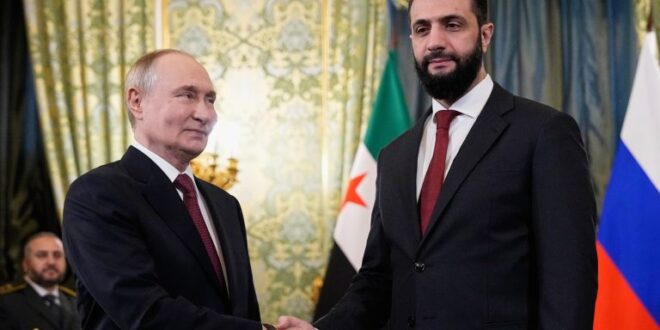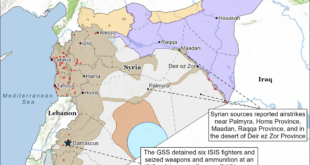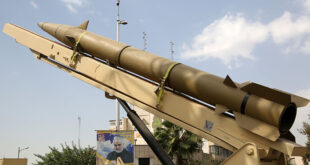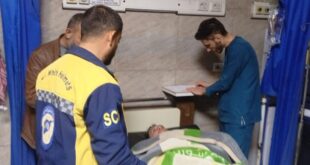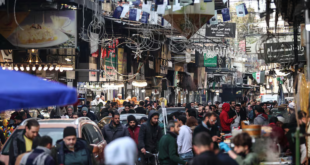Syria’s interim President Ahmed al-Sharaa is calibrating relations with both Washington and Moscow to ensure they both contribute to the country’s stability and security.
Sharaa’s meeting with Russian President Vladimir Putin last week sought, in part, to prod Trump officials to pressure Israel to end its assaults on Syrian territory and Syrian strategic assets.
U.S. officials are attempting to peacefully integrate the Kurdish-run Syrian Democratic Forces (SDF) into the Syrian military and transition the anti-ISIS mission to Damascus.
Syria held limited parliamentary elections earlier this month to demonstrate a commitment to moving past the repression and civil war of the Assad era.
Syria’s interim President Ahmed al-Sharaa’s meeting with Russian President Vladimir Putin at the Kremlin last Wednesday represented geostrategy intended to ensure that major outside powers play a positive role in — rather than spoil — Syria’s political and economic transition. He seeks, in large part, to convey that Syria is no longer an arena for outside actors to pursue their competition and conflicts by proxy. Sharaa has coupled his diplomacy with domestic action, such as holding parliamentary elections on October 5, intended to demonstrate to the population, to Syrians who left during the civil war, and to donor countries, that the country has decisively departed from the authoritarian repression that marked the rule of his ousted predecessor, Bashar al-Assad. However, ethno-sectarian unrest, fueled by fears of the new government’s policies and not necessarily stoked by outside powers, persists.
Sharaa’s visit to Moscow last week suggested his government can move past the Kremlin’s more than decade-long role in repressing anti-Assad rebels, including the Hayat Tahrir al-Shams (HTS) Islamist faction that Sharaa led to victory over the Assad regime last December. Sharaa explained the outreach as an attempt to “…restore and redefine in a new way the nature of these (Syria-Russia) relations so there is independence for Syria, sovereign Syria, and also its territorial unity and integrity and its security stability.” Sharaa sought, and apparently received, concrete pledges from Putin not to attempt to rearm “remnants” of Assad’s forces — primarily members of the Assad’s Alawite community, which has conducted several isolated rebellions since Assad’s collapse. Sharaa sought Russian help with the rebuilding of the Syrian army, although it is not clear whether Putin made any commitments on that issue in their meeting. More concretely, Russian ministers said they were ready to deliver foodstuffs and medication to Syria, and to help repair damaged power and transport infrastructure. Moscow has also reportedly sent oil shipments to Syria. Syrian leaders also sought to ensure Putin’s support for the lifting of UN terrorism sanctions on Sharaa, dating to his time as commander of an al-Qaeda affiliate.
For their part, the Russians welcomed Sharaa’s visit as an opportunity to safeguard their naval bases at Tartus and their Hmeimim air base. The post-Assad leadership has allowed Russian forces to continue to use the bases, although with constraints that limit Moscow’s ability to project power in the eastern Mediterranean and Middle East. After Assad’s fall, Russia moved most of its military assets from those bases to locations controlled by eastern Libyan strongman General Khalifah Haftar. Sharaa reportedly told Putin during their meeting that he would honor “all past agreements” between his country and Moscow, reassuring Russia that they could continue using the bases.
Although some experts termed the Sharaa visit to Moscow as more symbolic than practical, others interpreted it as an attempt by Damascus to signal to the West, to Washington in particular, that Syria will not rely solely on the U.S. and its allies. The effort to play great powers against each other might reflect, in part, Syrian dissatisfaction that the Trump team has been unable to compel Israeli Prime Minister Benjamin Netanyahu to cease attacking strategic targets in Syria or withdraw ground forces to their prior positions on the occupied Golan Heights. U.S. officials have been working to broker a Syria-Israel security accord under which the Israel Defense Forces (IDF) would evacuate the border posts they overtook when Assad forces fled during the regime collapse, and end attacks on Syria’s arsenals throughout the country. Trump’s team perceives that even more ambitious agreements are possible, including a Syria-Israel normalization of relations under the landmark Abraham Accords. However, the U.S.-mediated talks have not yielded concrete pacts between Israel and Syria, to date, and Israel remains in the positions to which it advanced, fueling Sharaa’s frustration with the Trump team.
Although concerned about the close U.S.-Israel alliance, Damascus considers Washington a productive and pivotal partner in helping the new government thwart remaining security challenges and eventually regain control of the more than 20 percent of largely minority-inhabited parts of Syria that remain outside its control. For now, U.S. forces are continuing their Assad-era mission to battle remnants of the Islamic State (ISIS), which operates in pockets of territory in eastern Syria. On October 2, a senior U.S. defense official said the U.S. presence in Syria remains “conditions-based” and the size of the deployment has been steady, since May, at “more than 900 personnel but fewer than 2,000.” The official noted there had been no withdrawals in recent months because ISIS remains “a significant threat,” still fielding “fighters and operational capabilities inside Syria.” He added that: “There’s fragility associated with the new government that’s very well understood, including articulated by the government itself. And, so, we’re just watching to see how the government forms and what the security apparatus looks like before we make any other decisions with respect to U.S forces.” U.S. forces play no role in helping the new government suppress any other armed unrest, such as that fueled recently by the Druze in Suwayda and the Alawite community along the coast.
In addition to helping blunt any ISIS resurgence, U.S. officials are attempting to mediate reconciliation between Damascus and Syria’s Kurds. Kurdish militia fighters constitute the core of the Syrian Democratic Forces (SDF), the main military force in northeastern Syria and the primary partner of U.S. forces seeking to prevent ISIS from using the turmoil in Syria to try to regroup. However, in his effort to consolidate power and exercise a monopoly of armed force within Syria’s borders, Sharaa and his team insist the Kurds no longer field an independent militia. U.S. officials agree with Sharaa, in principle, that the SDF should disband and view SDF integration into the Syrian army as paving the way for Damascus to take over the anti-ISIS mission and for U.S. forces to withdraw from Syria.
Early October clashes in Aleppo between Kurdish fighters and government-aligned security forces provided U.S. officials with an opportunity to try to broker a Kurd-Sharaa resolution. After the fighting, SDF commander Mazloum Abdi traveled to Damascus for talks with representatives of the Syrian government, in conjunction with a separate meeting between Sharaa, U.S. Ambassador to Türkiye and Special Envoy for Syria and Lebanon Tom Barrack, and U.S. Central Command (CENTCOM) commander Admiral Brad Cooper. The meetings produced a ceasefire between the SDF and government forces, announced on October 7, and an agreement in principle to integrate the SDF into the Syrian armed forces. However, Abdi’s understanding is that the SDF will join “as large military formations,” and not, as Sharaa has demanded, as individual soldiers, leaving resolution of the issue incomplete.
A resolution of the SDF’s status might also calm longstanding Turkish concerns about Syria’s Kurdish community. Türkiye views the Kurdish YPG, which comprises a significant portion of the SDF, as affiliated with the Kurdistan Workers’ Party (PKK), labeled by Türkiye and by the United States as a terrorist organization. Ankara and Damascus are reportedly finalizing an agreement to extend the permitted range from which Türkiye can strike Kurdish fighters inside Syria from approximately 3 miles to 19. In return, Türkiye reportedly is offering to supply Syria with new weaponry.
Sharaa has signaled that attracting support and cooperation from the U.S. and its allies requires not only diplomatic outreach but also a demonstration of his commitment to political pluralism. As part of its political transformation plan, on October 5, the government held indirect and limited, yet still significant, elections for 140 of the 210 seats in a new legislative body. (Sharaa appoints the remaining 70 seats). The election is key to Syria’s transition because one of the parliament’s key tasks will be to draft a new constitution for the country and prepare for direct public elections in the next term. Voting was not held in areas outside government control, such as Hasakah and Raqqa, or in Suwayda, where unrest among the Druze community has flared repeatedly.
Some criticized the election as insufficiently democratic because the electorate was selected by appointed regional councils, limiting the total number of voters nationwide to fewer than 10,000 Syrians. Others noted that the vote resulted in only seven women elected — far below a government target of 20 percent — and the results heavily favored men from the country’s Sunni Muslim majority who had fought in the years-long revolution against the Assad regime. Members of religious and ethnic minorities won fewer than a dozen seats — diluting Sharaa’s messaging that his government seeks to integrate all minorities and communities in the post-Assad political structure. However, most experts viewed the vote as a tentative, yet still positive start on the long road from repressive authoritarianism to a political structure based on consent of the governed.
 Eurasia Press & News
Eurasia Press & News
